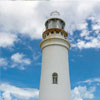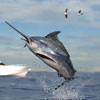
John Watling's Story and Castle on San Salvador
John Watling was a pirateer, meaning he had permisson from the Queen to be a pirate on her behalf.
Watling’s Castle, as it is popularly known, was never the home of the pirate John Watling. Stay with us here! Located in the south-west of the island on the site of the Sandy Point Plantation, the current ruins include parts of the old manor house and kitchen. Watling’s Castle was constructed in the late 1700s and early 1800s by the Loyalists who left America during the 1770s after America gained independence from the Crown. The Loyalists built Sandy Point Plantation (Watling’s Castle) and others like it throughout The Bahamas, giving reference to the period known as the Plantation Era. John (George) Watling, an English buccaneer, roamed the Caribbean and South America during the 1600s and is said to have made San Salvador his headquarters. Historical maps point to the veracity of these claims as the island is identified as Watling Island on maps created between the 1600-1800s. John Watling died in 1681 long before Watling’s Castle was built.
This is a post written and published by John Watlings Distillery:
Very little is known about the pirate John Watling who gave his name to Watling Island in The Bahamas. Information about Watling comes from journals written by Basil Ringrose, William Dampier or Lionel Wafer. In 1925, Watling Island was officially renamed San Salvador Island since it is considered by scholars and UNESCO to be the island of Guanahani where Christopher Columbus made first landfall in 1492. Today, in The Bahamas, John Watling’s name appears on Watling’s Castle which is an abandoned 18th century plantation on San Salvador Island and on JOHN WATLING’S rum, the “Spirit of The Bahamas”. While every bottle of his namesake rum is considered liquid gold, it is rumored that Watling’s treasure remains undisturbed at Fortune Hill in San Salvador.
Watling’s story begins in 1670, when King Charles II ceded The Bahamas to six Lord Proprietors from the Carolinas. On the island of New Providence they authorized the construction of Charles Town, modern day Nassau and now home to John Watling’s Distillery. Ten years later, Watling fled from Watling Island to Rum Cay from where he picked up supplies and sailed to Central America to join up with Captain John Coxon and Captain Bartholomew Sharpe. Under Coxon’s command they plundered Central America. Watling took aboard his ship a Misquito Indian which he named Will that he had captured north of Honduras off the island of Roatan. As with other Misquitos, Will fought against the Spanish and was therefore friendlier towards English pirates and privateers. He served as an important guide to Sharpe and Watling throughout their conquests throughout South America and the Islands of the South Sea.
April 1680:
“That which often Spurs men on to the undertaking of the most difficult Adventures, is he faced hunger of Gold; and t’was Gold was the bait that tempted a Pack of merry Boys of us, near Three Hundred in Number, being all Soldiers of Fortune, under Command (by our own Election) of Captain John Coxon…” (1)
Working their way down the Central American coast Coxon, Sharpe and Watling orchestrated a raid on Darien, modern day Panama. The raiders followed the same path as Henry Morgan had taken some years earlier and attacked Porto Bella, marched over the isthmus and also attacked Santa Maria.There he and his men captured the Spanish ship the “Most Holy Trinity”. After a raid on Panama City itself Captain Coxon split with Sharpe and Watling and both he and his men headed to Jamaica. Under Sharpe’s leadership, the Buccaneers amassed a fortune. Their exploits included more than 25 Spanish ships taken and several towns plundered. Many of the crew gambled their fortune away and on the 6th of January 1681, at Juan Fernandez Island, the crew mutinied, deposed Sharpe and elected Watling as Sharpe’s successor.

The ruins of John Watling's Castle, with Watling's blue hole in the background
December 1680:
“A party of the disaffected to Captain Sharpe got ashore and subscribed a Paper to make John Watling Commander, pretending liberty to a free election as they termed it, and that Watling had it by vote. The reason of this mutiny was that Sharpe had got about 3,000 pieces of Eighty and was willing to come home that year, but two thirds of the Company had none left; having lost it at play.” (1)
Watling, who was described as a “stout seaman” is also known the “Pious Pirate” since he observed the Sabbath and forbade gambling, throwing dice and the use of gaming boards. In addition to Bartholomew Sharpe, Watling sailed with William Dampier, father of modern day Australia and the first man to circumnavigate the world three times. Basil Ringrose, a crewman aboard Watling’s ship called him an “old privateer” spending many years “before the mast.” On the 12th of January 1681, three armed Spanish vessels approached the Island of Juan Fernandez and Watling and his crew fled port the following evening. Will, the Central America Indian guide, was hunting for goats in the island’s interior and due to the hasty departure was left marooned.
Having first-hand knowledge about Will, William Dampier returned to the island 4 years later. Will had been seen by Spanish landing parties a number of times but was never captured. He was rescued by Dampier on the 22nd of March 1684. His is recorded to have, upon being rescued, immediately killed three goats and served them up in English style, with cabbage.

After departing Juan Fernandez Island, Watling and his crew traveled to Arica in the Viceroyalty of Peru. He and another 92 buccaneers disembarked and trekked for five days to the city. Upon arrival they were exhausted having had to carry their own water and supplies. Watling split his men into two groups and attacked the settlement by sending one group to attack the fort with hand grenades and the rest to attack the town. Watling conquered the city and the Spanish retreated. They quickly re-organized and regained the settlement. Overwhelmed, the buccaneers fled and several men including Watling were shot. Watling died from a shot to the liver and died on 30th day of January 1681, the same anniversary as “the martyrdom of our glorious King Charles the First”. After Watling’s death, Bartholomew Sharpe was re-elected as Captain of the Trinity.

The ruins of John Watling's Castle
January 1681:
“Being surrounded with difficulties on all sides, and in great disorder, having nobody to give orders, what was to be done? We were glad to have our eyes upon our good old commander, Captain Bartholomew Sharpe, and beg of him very earnestly to commiserate our condition, and carry it off.” (2)
Shortly after Watling’s death in 1681, Bartholomew Sharpe raided the Spanish Galleon Consolación from the Spanish’s “South Seas Fleet”. The fleet left Lima’s port of Callao in April and the Consolación, having been delayed, travelled alone. At the Gulf of Guayaquil, off modern-day Ecuador, the Consolación encountered Sharpe who forced the galleon to sink on a reef off Santa Clara Island, later nicknamed “Isla de Muerto”. The crew fled to the island and set the ship afire. Greatly angered by his inability to seize the valuable cargo, Shape’s men killed the Spaniards and tried to recover the treasure in vain. The Consolación was re-discovered in 1998 and more than 8,000 coins were retrieved. Its registered cargo included 146,000 pesos in silver coins and gold ingots. Captain Sharpe is best known for being the first European man to round southernmost tip of South America, the Straights of Magellan and back to the Atlantic Ocean. Some of this silver can be seen at John Watling’s Distillery.
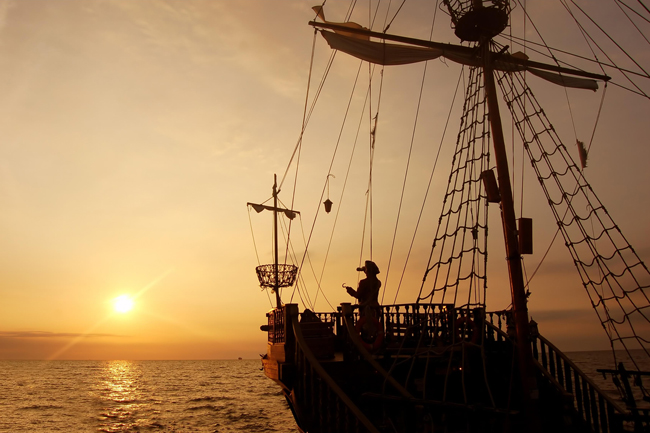
January 1681:
“28. Saturday, This Morning about 4 of the Clock, we made the island of Barbados, it bore W. by S. 3. Leagues distance; but we fell in with the North part of the isle. This was the first Land we had seen in about three Months time, which was from our leaving the Duke of York’s island,(3) in the South Sea; we coming a Way that had never been known before, many Degrees South of the Straights of Magellan.” (1)
In 1703, Dampier once again sailed to the Pacific Ocean on the St. George while Tomas Stradling commanded its companion ship the Cinque Ports. In May 1704, the two ships parted ways and Alexander Selkirk, voicing graver concerns about the seaworthiness of the Cinque Ports, declared he would rather be left on Juan Fernandez Island than continue in a dangerously leaky ship. Three years later on another Dampier expedition, the future Royal Governor of The Bahamas, Woodes Rogers, commanding the ships Duke and Duchess, rescued Selkirk on the 1st of February 1709. Daniel Defoe based Robinson Crusoe on the stories of Selkirk and Will.
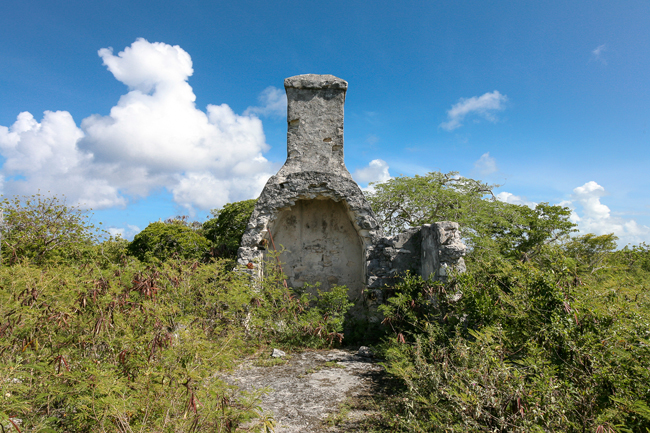
The ruins of John Watling's Castle
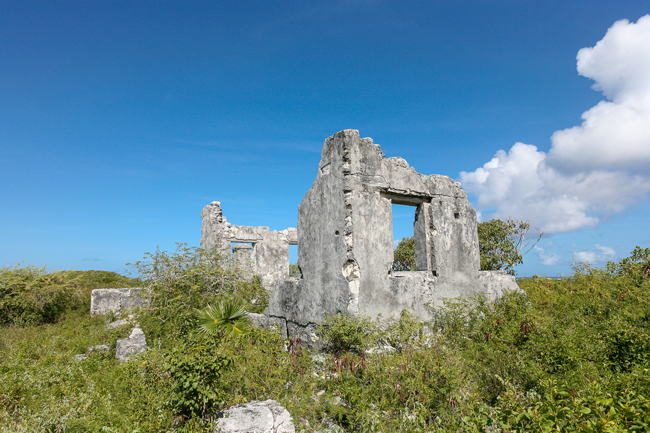
While John Watling left these islands for conquests in other lands it is rumoured that his treasure is buried at Fortune Hill in San Salvador. During the “Age of Pirates” there are many privateers that resided in The Bahamas who relieved Spanish Galleons of their precious cargo. Each pirate had his favourite location for plundering and hiding their treasure; Henry Morgan preferred the dangerous shoals off Andros; Captain Kidd lurked at Kidd Cove and anchored in Elizabeth Harbour in Exuma, William Catt is reputed to have buried his treasure in the waters off Cat Island; Anne Bonney favoured Cat Island as well; and John Watling renamed San Salvador after himself. Today his boldness and spirit of adventure can be found inside every bottle of JOHN WATLING’S rum, the true “Spirit of The Bahamas”.
(1) From the diary of Bartholomew Sharpe, 1681
(2) History of the Buccaneers by Basil Ringrose, 1685
(3) Duke of York Islands are located off Papua, New Guinea

